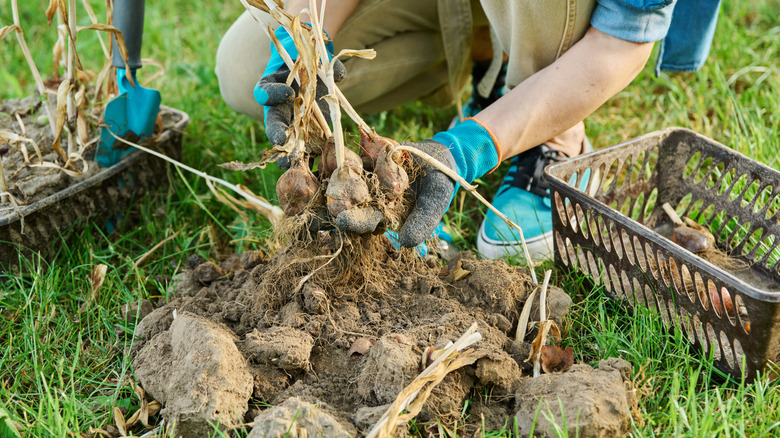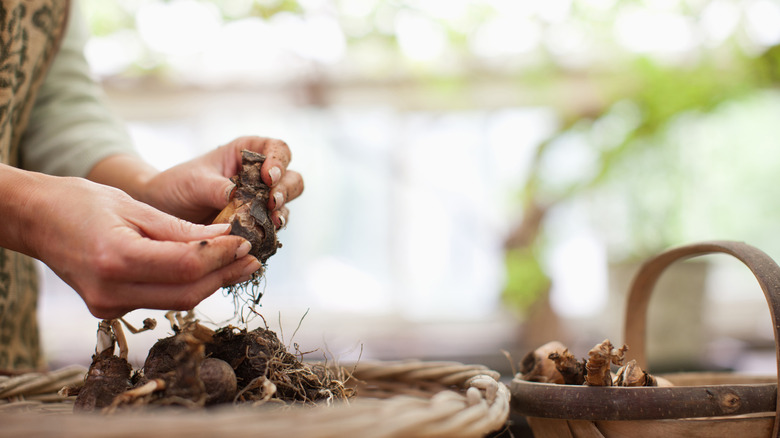How To Safely Lift And Store Tulip Bulbs After They've Bloomed
Lifting your flower bulbs from the ground after they've bloomed is a useful strategy if your perennial tulips (Tulipa spp.) come back but aren't as big or abundant as in previous years. If you want to safely lift and store your bulbs, the keys are to not damage them while lifting them, let them dry out, then store them in a cool place until you replant them later in the fall.
First, you might put on some gloves. Some people can develop a rash if handling bulbs without gloves on. Tulips can also be toxic to pets and humans if ingested. Begin the process by slowly and carefully loosening the soil around the bulbs to make sure that you don't damage them. Lift the bulb and stem by hand or with a garden tool — the less sharp the tool, the better. Snip off the stem. Discard any bulbs that look diseased, damaged, or rotten, divide any child bulbs from the parent bulb to plant in a separate location, remove the brown outer layer of the bulb (as you would an onion), then wipe any dirt off.
Spread the bulbs evenly on a drying rack for a couple of days until they dry out, then store them in a mesh produce bag or burlap sack and hang them in a cool, dark space. You can also pack them in sand. Avoid storing them in peat moss, the harvesting of which is unsustainable and contributes to climate change. In the fall, do everything you would normally do before planting tulips, then plant your dried bulbs as you would any other bulb of that species.
When (and when not) to lift tulip bulbs
Your tulips may need lifting if your soil is nutrient-poor, your garden gets water-logged and rots your bulbs, or critters or frost heaves dig up your bulbs. The time to lift them is after all the leaves have died back. Before that, you can deadhead them soon after the petals have faded. This prevents the plant from trying to produce seeds, which takes energy away from storing it in its bulb. But wait until all the leaves have turned yellow and died back. If they're still green, that means they are still photosynthesizing and storing energy in their bulbs.
You may not need to lift your bulbs at all. If your tulips are producing healthy flowers year after year, then there is no reason to lift them. Tulips are perennials. They've evolved to store enough energy in their bulbs to come back year after year, and many people never lift their bulbs. If you're looking for the best kinds of tulips to start a garden, plant "species tulips" and hybrids specifically cultivated as naturalizers, as these are more likely to give you years of enjoyment.
For other tulips, lifting them is a lost cause. Some tulips are treated like annuals, replaced rather than lifted or left alone. Many of the showiest tulips are specifically bred to use as much of the energy stored in their bulbs to produce magnificent flowers the first year, but the plants don't store enough energy to come back the next year. They've essentially exhausted their usefulness as an asset to your garden. Enjoy their show for one year, then compost them and start over the following year.

